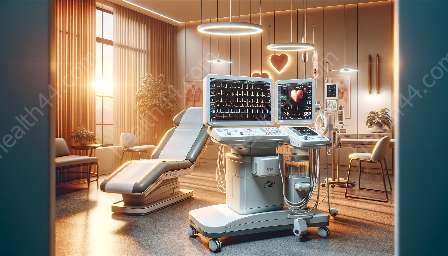Electrocardiography (ECG or EKG) technology has seen remarkable advancements in recent years, leading to enhanced accuracy, portability, and connectivity. These developments not only improve the diagnostic capabilities of ECG/EKG machines but also have wide-ranging implications for their integration with medical devices and equipment. This article explores the future trends and advancements in ECG/EKG technology, their impact on the design and function of ECG/EKG machines, and the potential for seamless integration with other medical devices and equipment.
Advancements in ECG/EKG Technology
The future of ECG/EKG technology is marked by several key advancements that promise to revolutionize the field. One significant trend is the miniaturization of ECG/EKG devices, allowing for increased portability and ease of use. This miniaturization has been made possible by developments in sensor technology, enabling the creation of more compact yet highly accurate ECG/EKG machines.
Moreover, advancements in signal processing algorithms have enhanced the ability of ECG/EKG technology to detect and analyze subtle cardiac irregularities, leading to improved diagnostic accuracy. These algorithms not only enable automated interpretation of ECG/EKG readings but also facilitate real-time monitoring and analysis of cardiac activity.
Another notable advancement is the integration of ECG/EKG technology with wearable devices, such as smartwatches and fitness trackers. This integration allows for continuous monitoring of cardiac health, providing valuable insights into the wearer's heart activity throughout the day and during various activities.
Impact on ECG/EKG Machine Design and Function
The advancements in ECG/EKG technology have necessitated a rethinking of the design and function of ECG/EKG machines. The trend towards miniaturization has led to the development of compact, lightweight, and portable ECG/EKG machines that can be easily carried by healthcare professionals for on-the-go diagnostics.
Furthermore, the integration of advanced signal processing algorithms has transformed ECG/EKG machines into powerful diagnostic tools, capable of detecting subtle abnormalities that may have previously gone unnoticed. This enhanced diagnostic capability not only aids in the early detection of cardiac conditions but also contributes to better-informed treatment decisions.
Additionally, the incorporation of connectivity features in ECG/EKG machines has enabled seamless data transfer and integration with electronic health record (EHR) systems, allowing for the efficient storage, retrieval, and analysis of ECG/EKG data. This connectivity also facilitates remote monitoring, enabling healthcare providers to monitor patients' cardiac health from a distance.
Integration with Medical Devices and Equipment
The future trends and advancements in ECG/EKG technology extend beyond the devices themselves and have implications for their integration with other medical devices and equipment. The seamless integration of ECG/EKG machines with other diagnostic tools, such as ultrasound machines and X-ray systems, offers a comprehensive approach to cardiac assessment, allowing healthcare professionals to obtain a more complete picture of a patient's cardiac health.
Furthermore, the integration of ECG/EKG technology with implantable devices, such as pacemakers and defibrillators, enables these devices to receive real-time ECG/EKG data, enhancing their ability to deliver tailored interventions based on the patient's cardiac activity.
Moreover, the interoperability of ECG/EKG machines with electronic medical records and telehealth platforms facilitates efficient data sharing and remote consultations, enabling healthcare providers to collaborate and make informed decisions based on ECG/EKG data, regardless of geographical barriers.
Conclusion
The future of ECG/EKG technology holds great promise, with advancements in miniaturization, signal processing, and connectivity shaping the next generation of ECG/EKG machines. These advancements not only enhance the diagnostic capabilities of ECG/EKG technology but also pave the way for seamless integration with other medical devices and equipment, ultimately leading to improved patient care and outcomes.


